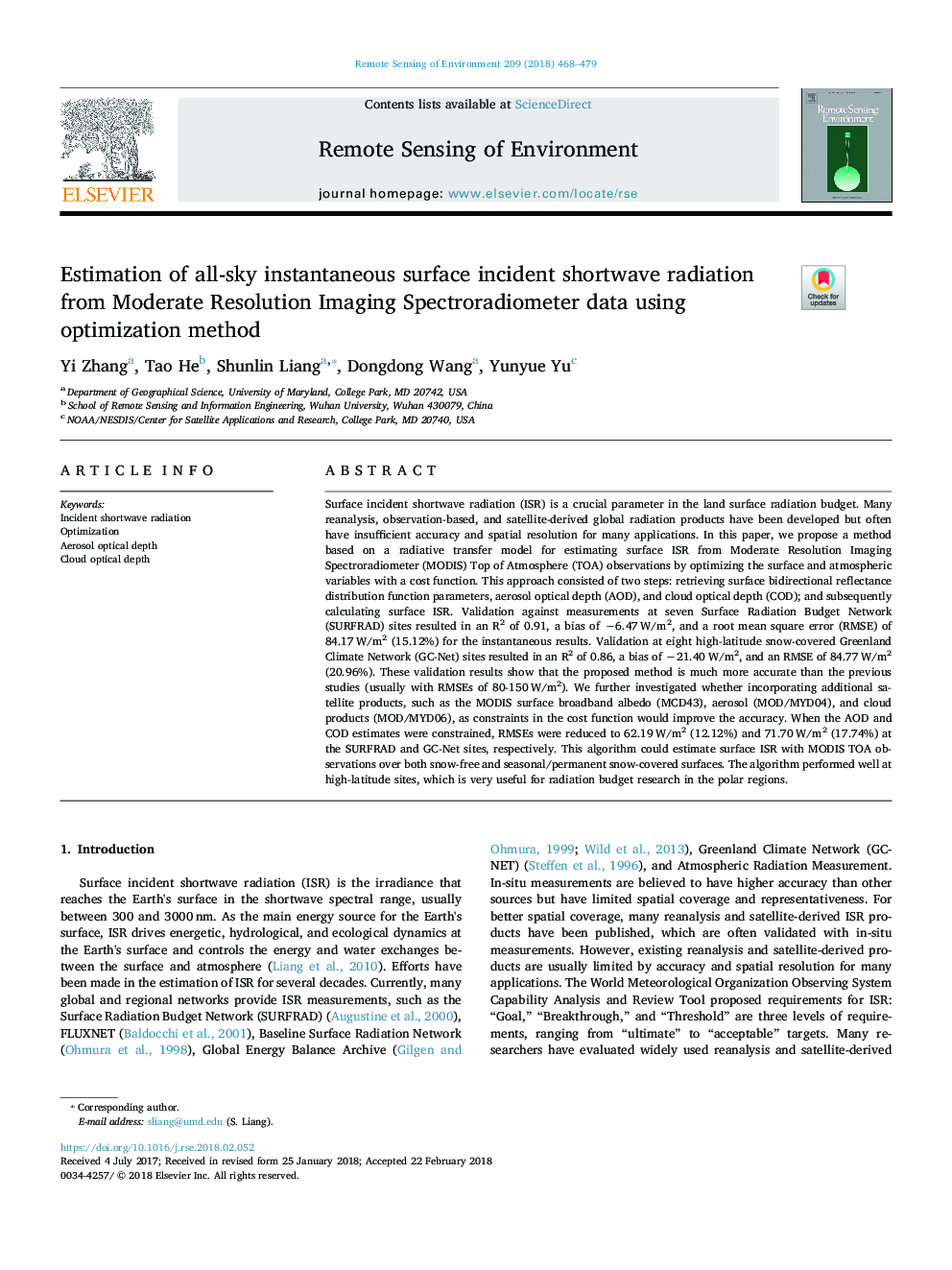| کد مقاله | کد نشریه | سال انتشار | مقاله انگلیسی | نسخه تمام متن |
|---|---|---|---|---|
| 8866653 | 1621191 | 2018 | 12 صفحه PDF | دانلود رایگان |
عنوان انگلیسی مقاله ISI
Estimation of all-sky instantaneous surface incident shortwave radiation from Moderate Resolution Imaging Spectroradiometer data using optimization method
ترجمه فارسی عنوان
برآورد تابش خورشیدی مضرب سریع لحظه ای تمام آسمان از داده های طیف سنج رادیو با وضوح تصویر متوسط با استفاده از روش بهینه سازی
دانلود مقاله + سفارش ترجمه
دانلود مقاله ISI انگلیسی
رایگان برای ایرانیان
کلمات کلیدی
تابش نور خورشید حادثه، بهینه سازی، عمق نوری آئروسل، عمق ابر نوری،
موضوعات مرتبط
مهندسی و علوم پایه
علوم زمین و سیارات
کامپیوتر در علوم زمین
چکیده انگلیسی
Surface incident shortwave radiation (ISR) is a crucial parameter in the land surface radiation budget. Many reanalysis, observation-based, and satellite-derived global radiation products have been developed but often have insufficient accuracy and spatial resolution for many applications. In this paper, we propose a method based on a radiative transfer model for estimating surface ISR from Moderate Resolution Imaging Spectroradiometer (MODIS) Top of Atmosphere (TOA) observations by optimizing the surface and atmospheric variables with a cost function. This approach consisted of two steps: retrieving surface bidirectional reflectance distribution function parameters, aerosol optical depth (AOD), and cloud optical depth (COD); and subsequently calculating surface ISR. Validation against measurements at seven Surface Radiation Budget Network (SURFRAD) sites resulted in an R2 of 0.91, a bias of â6.47â¯W/m2, and a root mean square error (RMSE) of 84.17â¯W/m2 (15.12%) for the instantaneous results. Validation at eight high-latitude snow-covered Greenland Climate Network (GC-Net) sites resulted in an R2 of 0.86, a bias of â21.40â¯W/m2, and an RMSE of 84.77â¯W/m2 (20.96%). These validation results show that the proposed method is much more accurate than the previous studies (usually with RMSEs of 80-150â¯W/m2). We further investigated whether incorporating additional satellite products, such as the MODIS surface broadband albedo (MCD43), aerosol (MOD/MYD04), and cloud products (MOD/MYD06), as constraints in the cost function would improve the accuracy. When the AOD and COD estimates were constrained, RMSEs were reduced to 62.19â¯W/m2 (12.12%) and 71.70â¯W/m2 (17.74%) at the SURFRAD and GC-Net sites, respectively. This algorithm could estimate surface ISR with MODIS TOA observations over both snow-free and seasonal/permanent snow-covered surfaces. The algorithm performed well at high-latitude sites, which is very useful for radiation budget research in the polar regions.
ناشر
Database: Elsevier - ScienceDirect (ساینس دایرکت)
Journal: Remote Sensing of Environment - Volume 209, May 2018, Pages 468-479
Journal: Remote Sensing of Environment - Volume 209, May 2018, Pages 468-479
نویسندگان
Yi Zhang, Tao He, Shunlin Liang, Dongdong Wang, Yunyue Yu,
